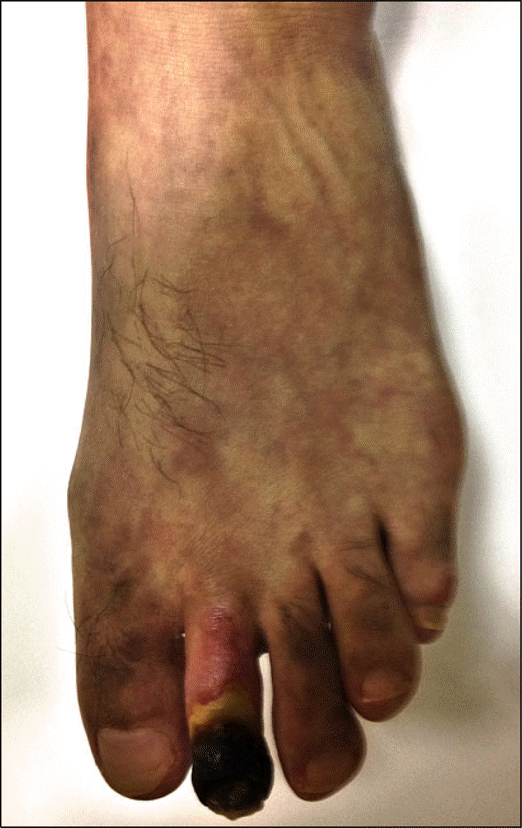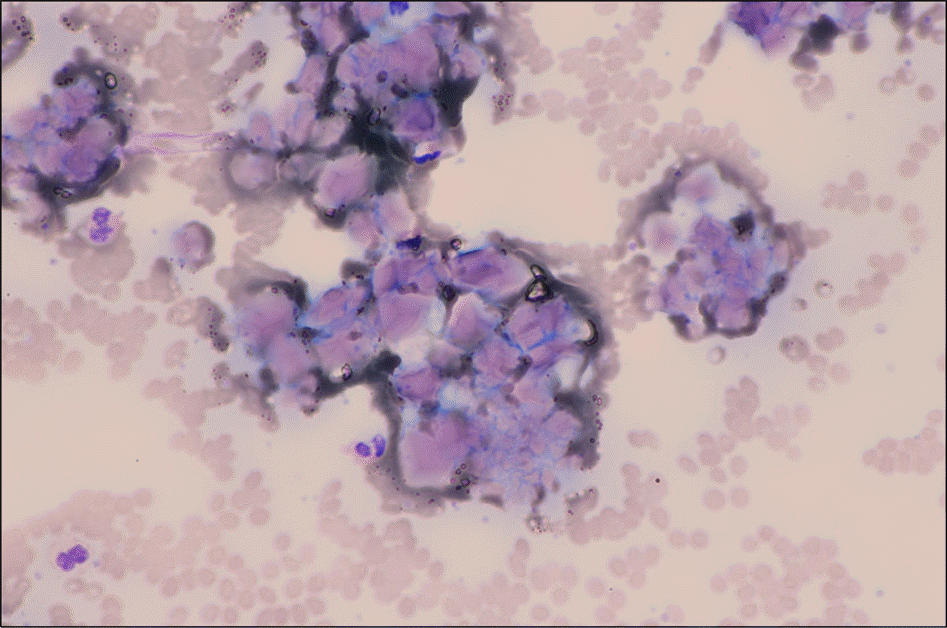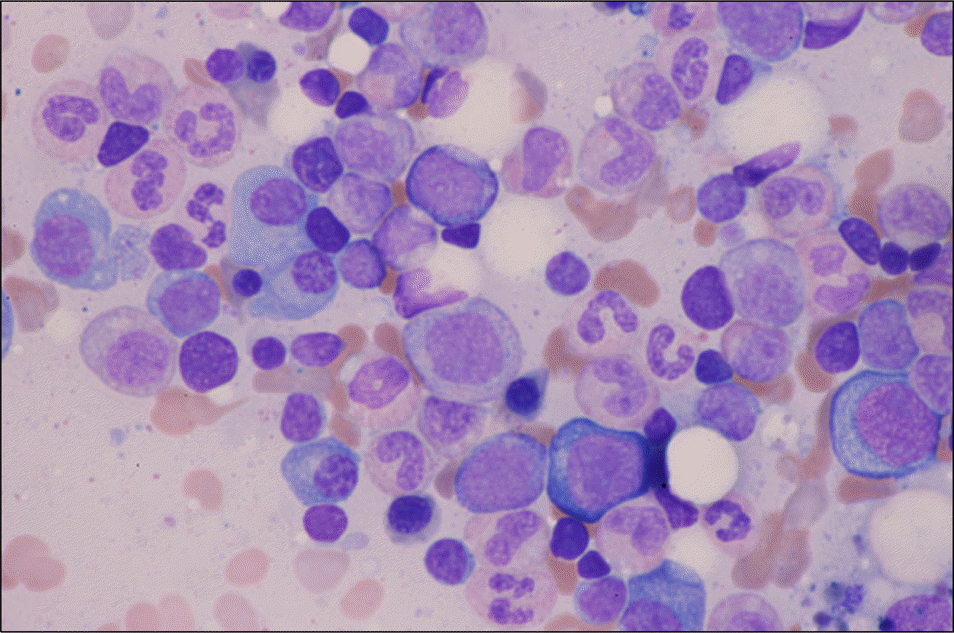REFERENCES
1. Harel S, Mohr M, Jahn I, Aucouturier F, Galicier L, Asli B, et al. Clinico-biological characteristics and treatment of type I monoclonal cryoglobulinaemia: a study of 64 cases. Br J Haematol. 2015; 168:671–8.

2. Dispenzieri A, Katzmann JA, Kyle RA, Larson DR, Melton LJ 3rd, Colby CL, et al. Prevalence and risk of progression of light-chain monoclonal gammopathy of undetermined significance: a retrospective population-based cohort study. Lancet. 2010; 375:1721–8.

3. Terrier B, Karras A, Kahn JE, Le Guenno G, Marie I, Benar-ous L, et al. The spectrum of type I cryoglobulinemia vasculitis: new insights based on 64 cases. Medicine (Baltimore). 2013; 92:61–8.
4. Kyle RA, Buadi F, Rajkumar SV. Management of monoclonal gammopathy of undetermined significance (MGUS) and smoldering multiple myeloma (SMM). Oncology (Wil-liston Park). 2011; 25:578–86.
Figure 1.
There was gangrene of the left second toe. Other toes also showed mild cyanotic change on their tips with a background of livedo reticularis.





 PDF
PDF ePub
ePub Citation
Citation Print
Print




 XML Download
XML Download